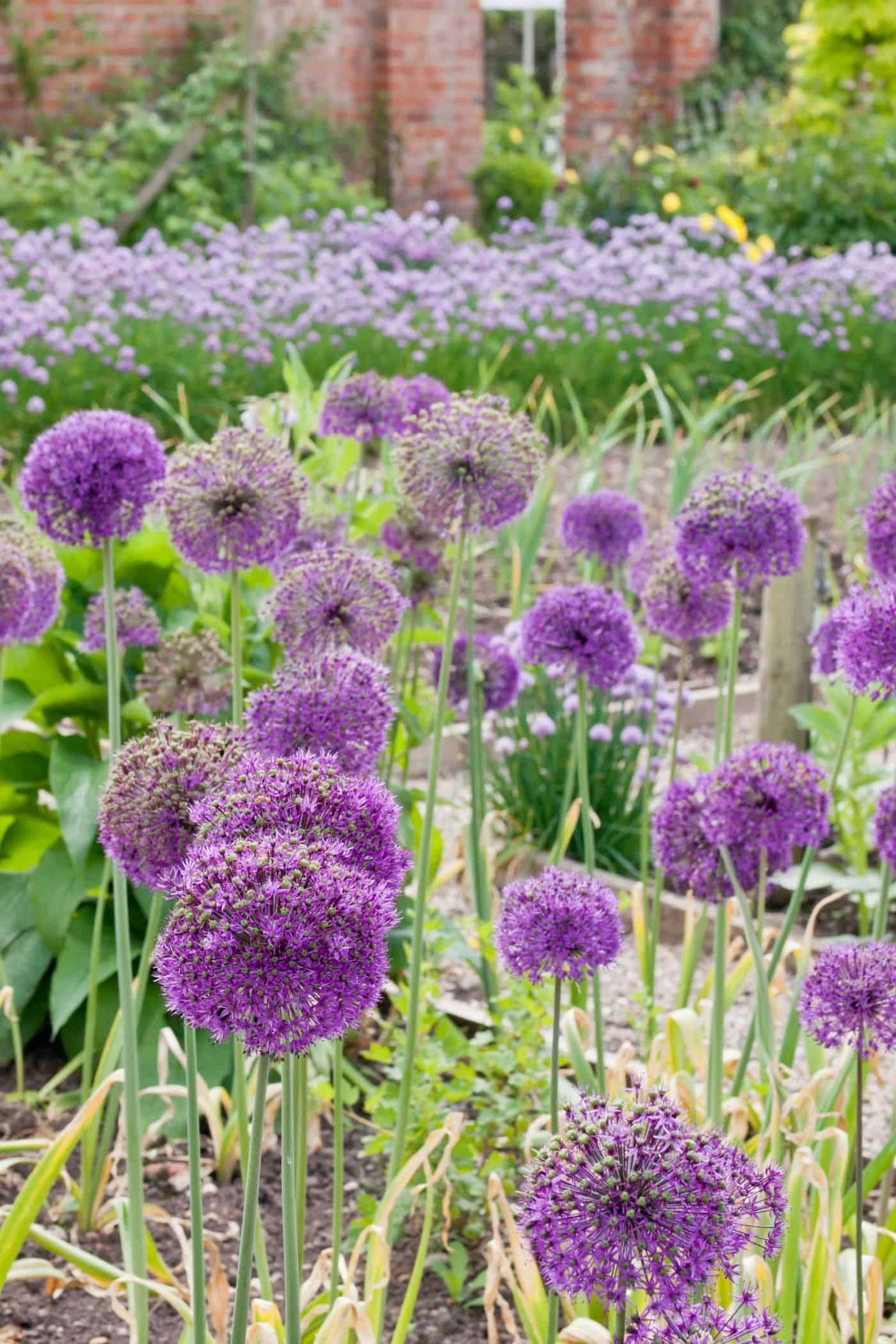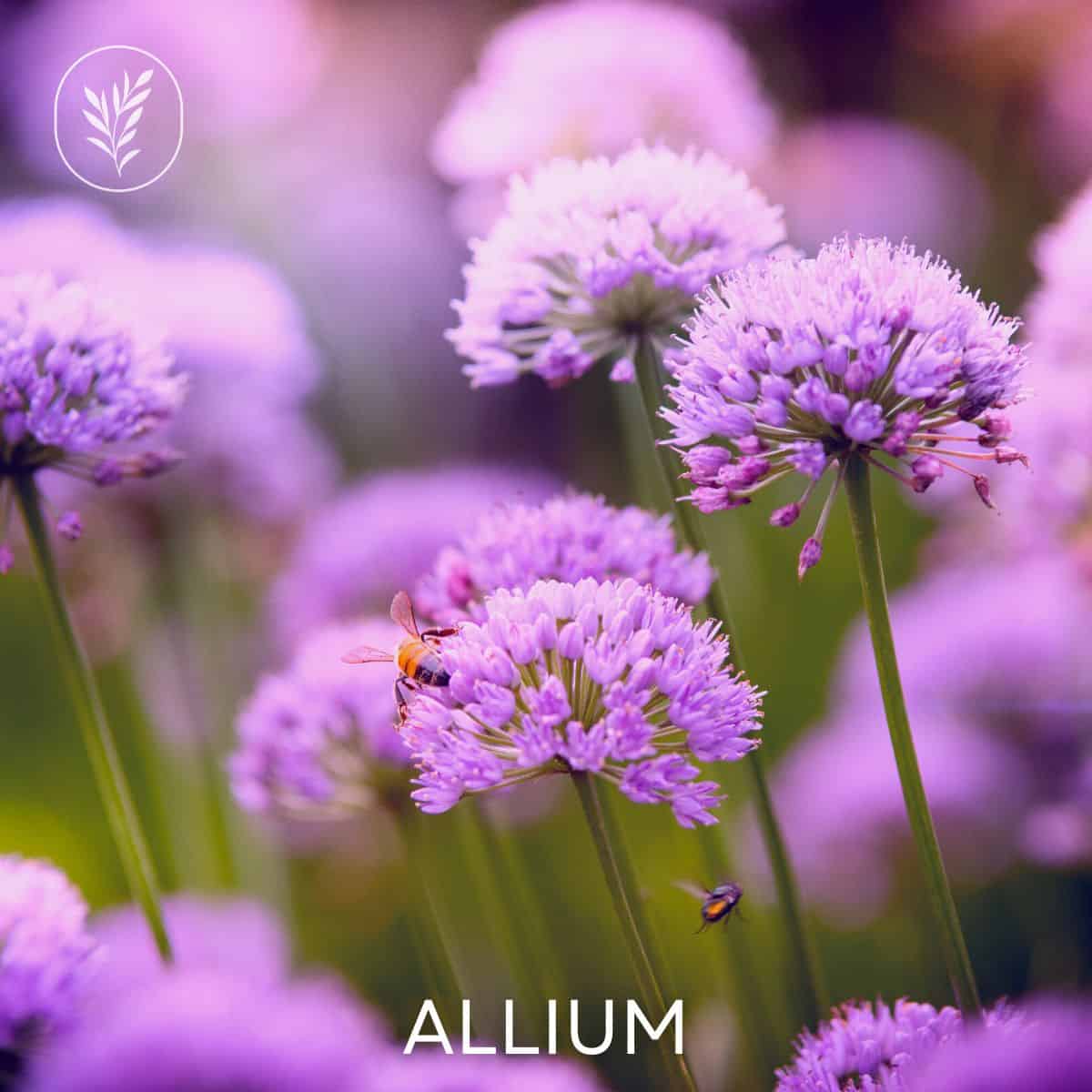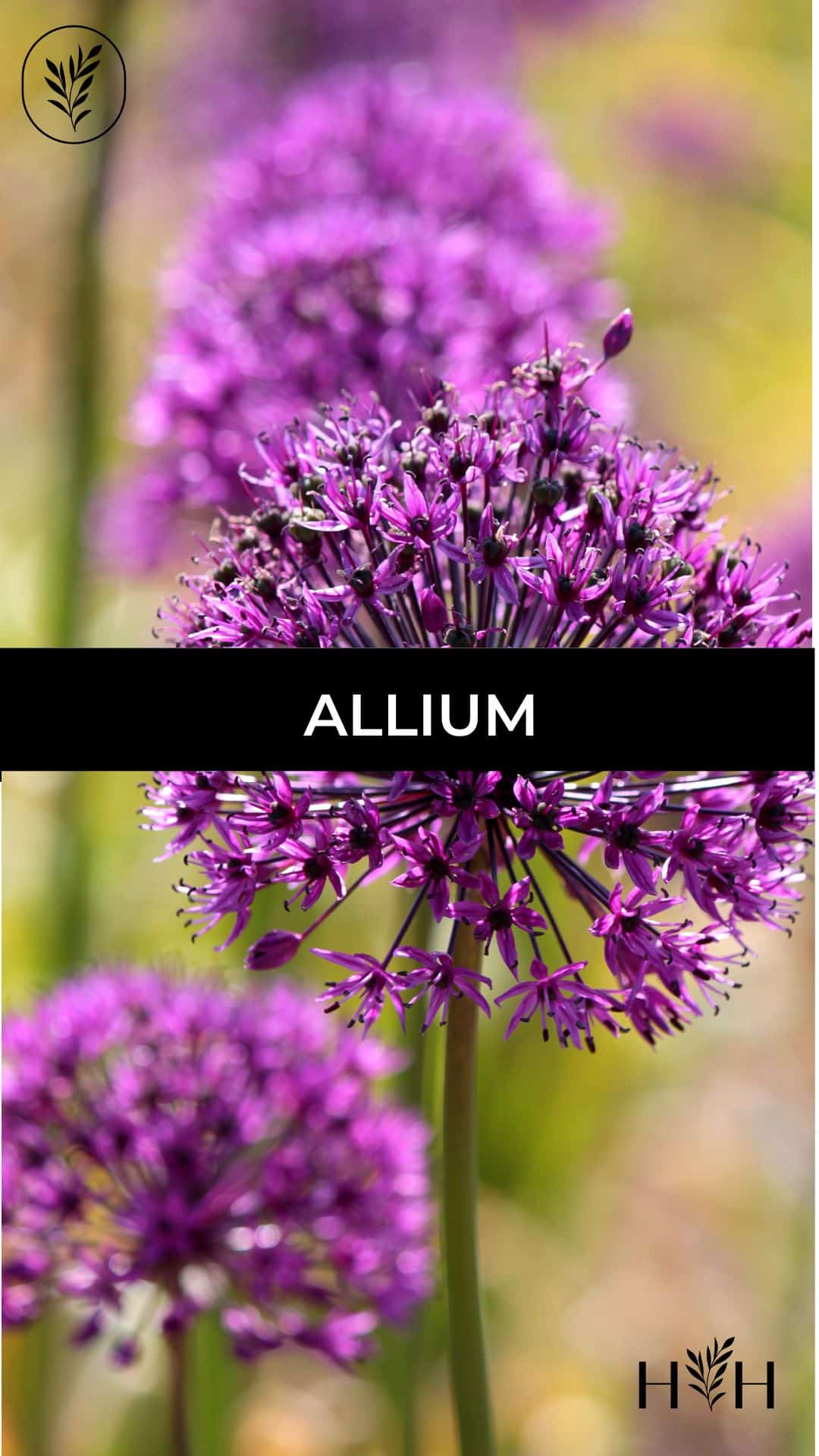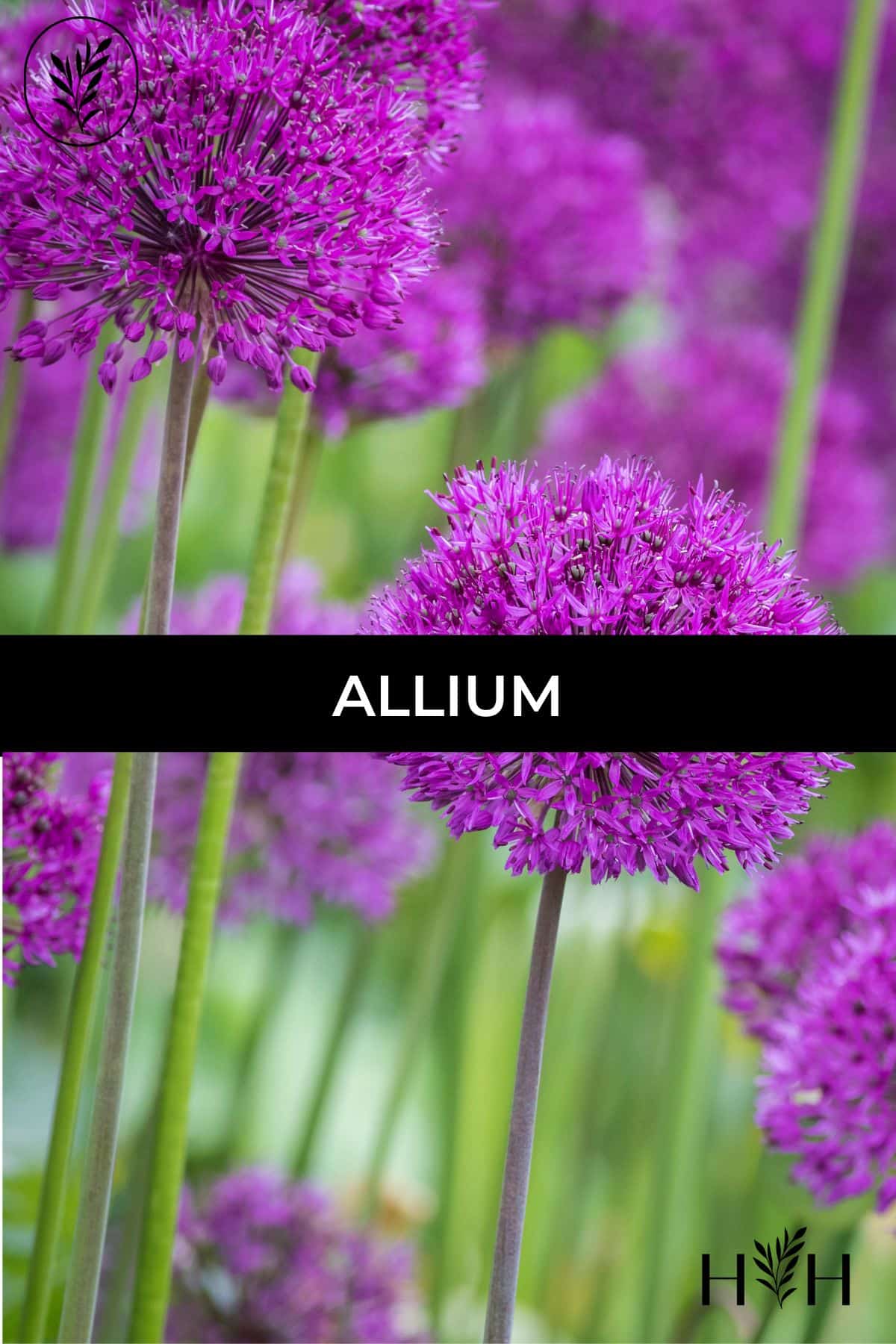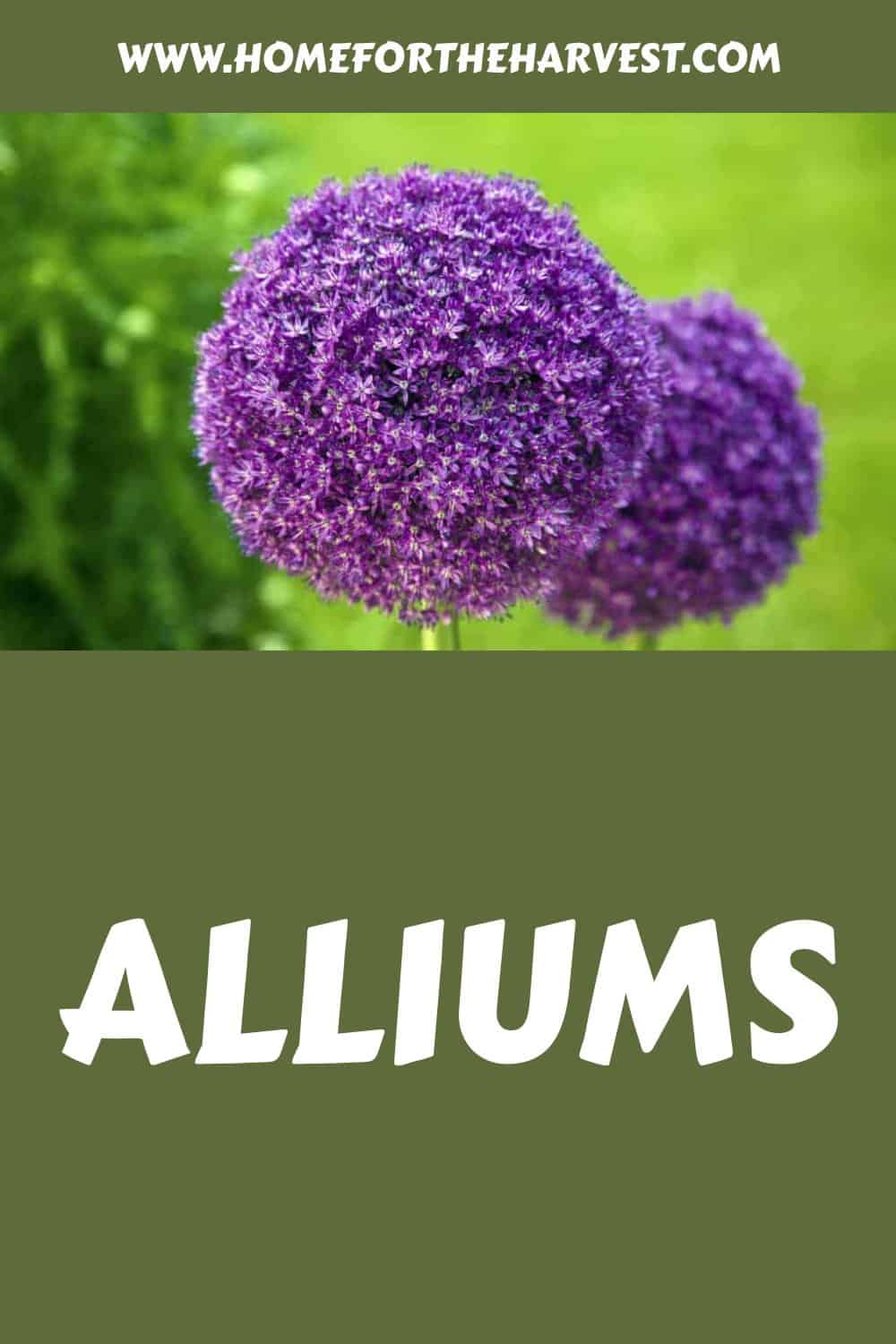With its beautiful purple blooms, Allium will provide any garden with a splash of color and variety. Are you looking for something new and different to add to your garden? Allium might be just the plant you are looking for.
Allium is a genus of monocotyledonous flowers that includes hundreds of different onion species, both edible and ornamental. Ornamental alliums are available either in purple or white flowers, which tend to be spherical. Alliums grow from bulbs and are generally a very easy plant to take care of.
Still not quite sure if Allium is right for your garden? Keep reading to learn more about this interesting plant, including its origins, ways to keep it healthy, treating pests and diseases, and some commonly asked questions. You may find that Allium is just the flower you need to spice things up.
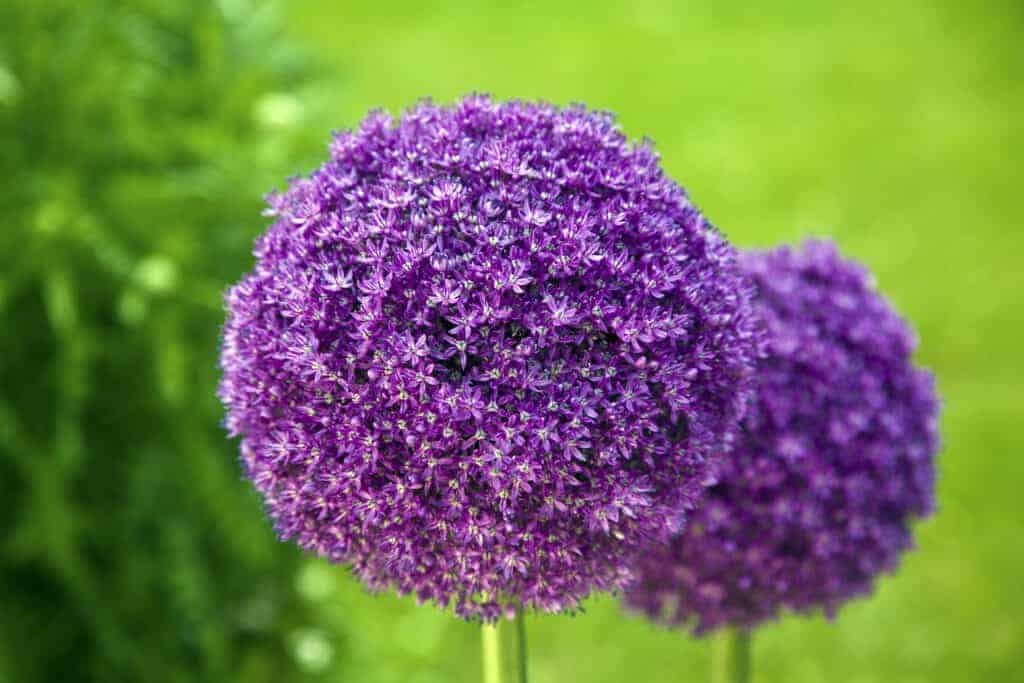
Allium plant basics
Allium is one of the most stunning spring-flowering bulbs to grow in your garden. Alliums, or Ornamental Onions, encompass everything from small perennializing plants to towering giant allium varieties.
Most varieties of allium are native to the Northern Hemisphere and are grown and found predominantly in Asia. There are over 138 varieties of allium that are native just to China. This genus is widespread enough that there are varieties that thrive from the boreal zone all the way to dry subtropics.
Most allium that you will see in gardens will grow to be around 18 inches tall, though heights will vary with variety. There are dozens of different color palettes, bloom times, and flower forms. Alliums make a beautiful cut or dry flower bouquet, and they are relatively easy to keep in a garden because their tall, slender form does not typically take up that much space.
And another perk? Alliums are resistant to most pests like deer, voles, rabbits, and chipmunks, which should hopefully keep such vermin out of your garden period! Plus, because of its rounded shape, allium actually tends to attract extra pollinators, which benefits not only the allium plants but all the other plants in your garden as well. A plant that attracts pollinators and deters pests? It doesn’t get much better than that.
Allium varieties
Here are some popular ornamental Allium varieties:
- Globemaster allium
- Millennium allium
- Beau Regard giant allium
- Ping Pong Pink/White allium
- Schubertii allium
Try these gorgeous alliums in your flower garden!

Planting Allium bulbs
One of the nice things about allium is its ability to be grown in either a garden or a container. They can grow to be pretty tall, too, so just keep that in mind. If you are planting alliums in your garden, you will want to wait until the soil is a bit colder—somewhere around 60°F should do the trick. If you live in a northern region, this should be sometime around September-October. If you live in a southern region, this should be sometime around October-November.
When you plant your alliums in an outdoor garden, make sure you plant them in an area that gets full sun exposure. You will need to plant the bulbs about four to eight inches deep in the soil, with the pointed ends facing upward. Keep them roughly six to eight inches apart so they have plenty of room to grow and thrive.
After you have planted your alliums, water them well and wait for the next spring to come. As mentioned before, you should plant your alliums when you first start to feel the chill of fall. This cold spell will help your alliums to establish their roots in the ground and be ready to bloom when spring arrives. Alliums are perennials, so they will come back every year, but only if they are pruned correctly. Once the allium has bloomed, don’t just cut off its head. You should wait until the flowers and stems have completely yellowed and died before removing the tops.
Planting Allium bulbs in containers
If you are planning to put your alliums in a container, the steps are fairly similar to that of planting them in a garden in the ground. You will need to choose a container that drains well and can be filled with plenty of loose soil. If the soil becomes too hard-packed in the pot, it will retain far too much water to be healthy for your plants.
As with the garden, you will want to plant your alliums four to eight inches deep. However, depending on the size of your container, you may not have as much area as you would have in a garden. Allium bulbs can be placed quite close together in a planter pot, but they should not be touching.
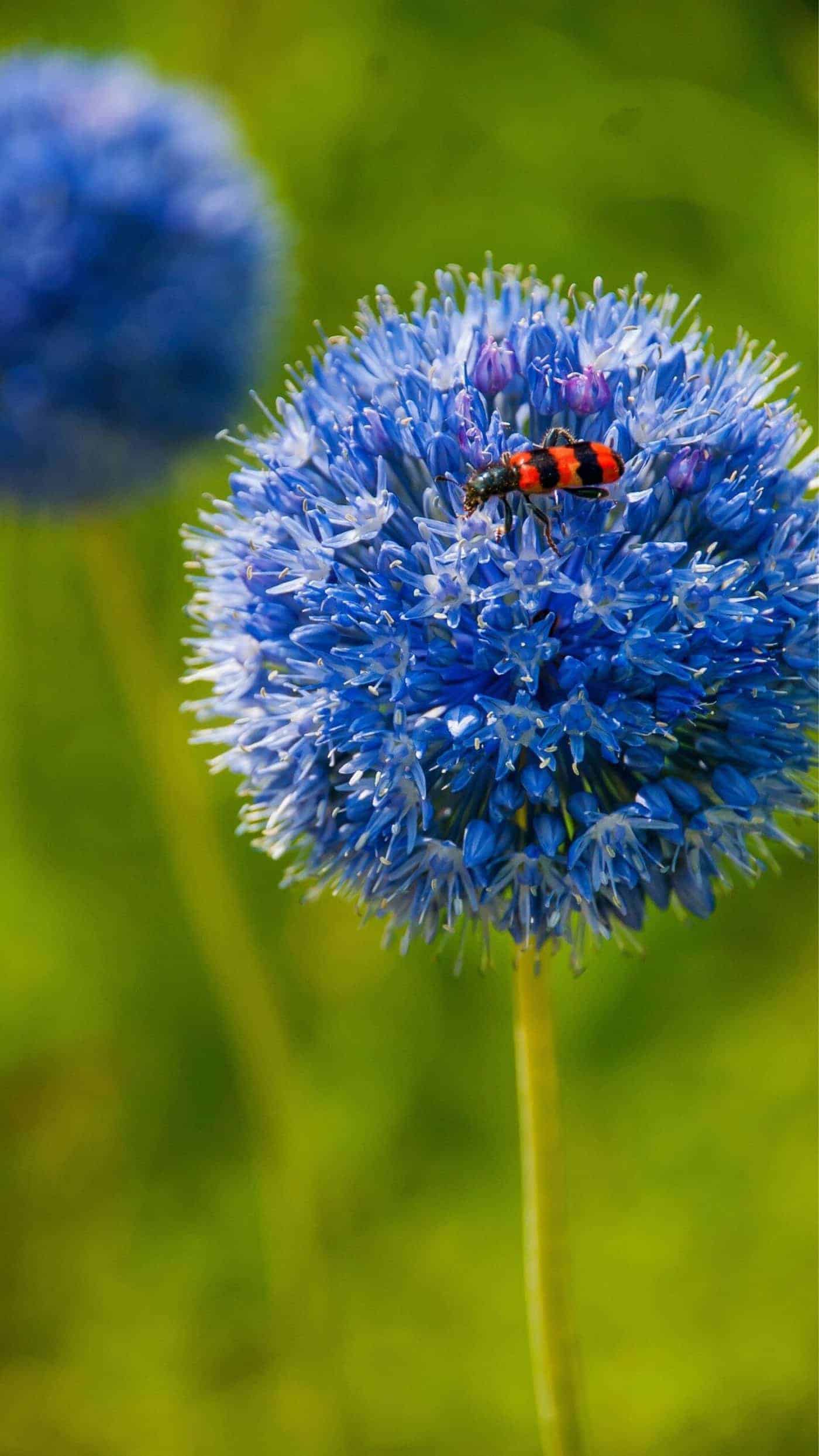
Caring for Allium plants
These bulbs should bloom for quite a while, or at least until the beginning of the cold season. Just as with the garden-planted alliums, you should not cut off the heads (or the blooms) until after they have yellowed and shriveled up completely. Once that has happened, you will know the plants are ready for winter’s hibernation.
You will quickly find that allium is a pretty tough plant and can withstand most kinds of weather and conditions. You usually don’t even need to water your allium if you live in an area that gets plenty of rain. In fact, it is sometimes easier to kill your allium with water than to keep it alive with water. To put it simply, allium can’t handle being overwatered.
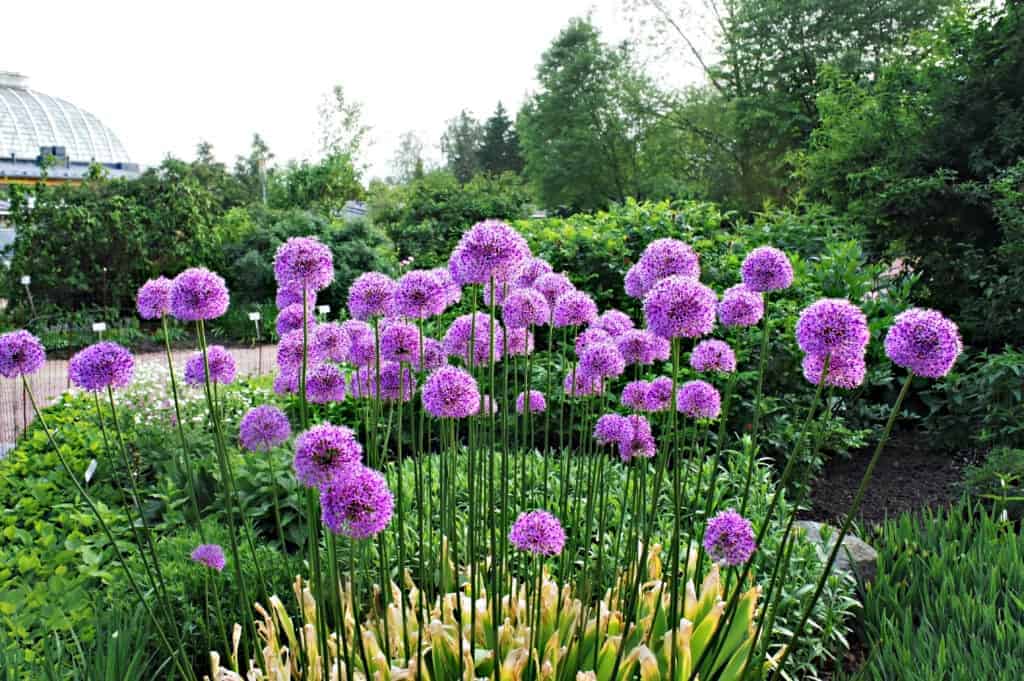
Pests affecting Allium plants in the garden
Allium is generally a pretty tough plant, but like anything, it has some vulnerabilities. Here are a few of its issues that you may want to be aware of:
Of all the pests in the world, none are quite so bothersome to allium as the allium leaf miner. This little insect packs quite the punch if it is allowed to spread to the four corners of your garden. They can destroy entire crops if left unattended.
The first part of fixing a leaf miner infestation is identifying what you are up against. These flies are completely diminutive, measuring in at about an eighth of an inch long. Allium leaf miners are usually colored gray or black and can be positively identified by the orange (or yellow) patches on their heads and abdomens. They are usually black behind the eyes, and they are yellow or orange around the legs/knees. If you look closely, you may even be able to see red dots underneath the wings.
Allium leaf miners will lay eggs, but these are often difficult to see with the naked eye. If you are able to see them, you will recognize them by their white color and their curved shape. The larvae will probably be no more than a third of an inch long and cream, white, or yellow in color. When they exit the larva stage and enter the pupa stage, identification will be critical because they will be completely dormant until they leave the pupa stage.

The Allium leaf miners will pupate inside the stem’s tissue, but they will still be visible to the outer eye. This means you have the chance to get rid of them while they are not currently spreading. You will be able to identify eggs and/or pupae by a series of white spots in a line down the leaves of your plant (which are actually punctured where the eggs have been put into the plant). These spots will grow increasingly bigger as the larvae grow and tunnel through the leaves.
You can kill Allium leaf miners by using what is called integrated pest management (IPM). This is an organic method of getting rid of pests in a more long-term way. It is a fairly new method that involves biological and habitat manipulation. It involves carefully monitoring which critters are helpful to your garden and which ones are not. This is a very involved and meticulous way of getting rid of your pests, but if you would prefer not to have harmful pesticides put into your garden, this is what you should do.
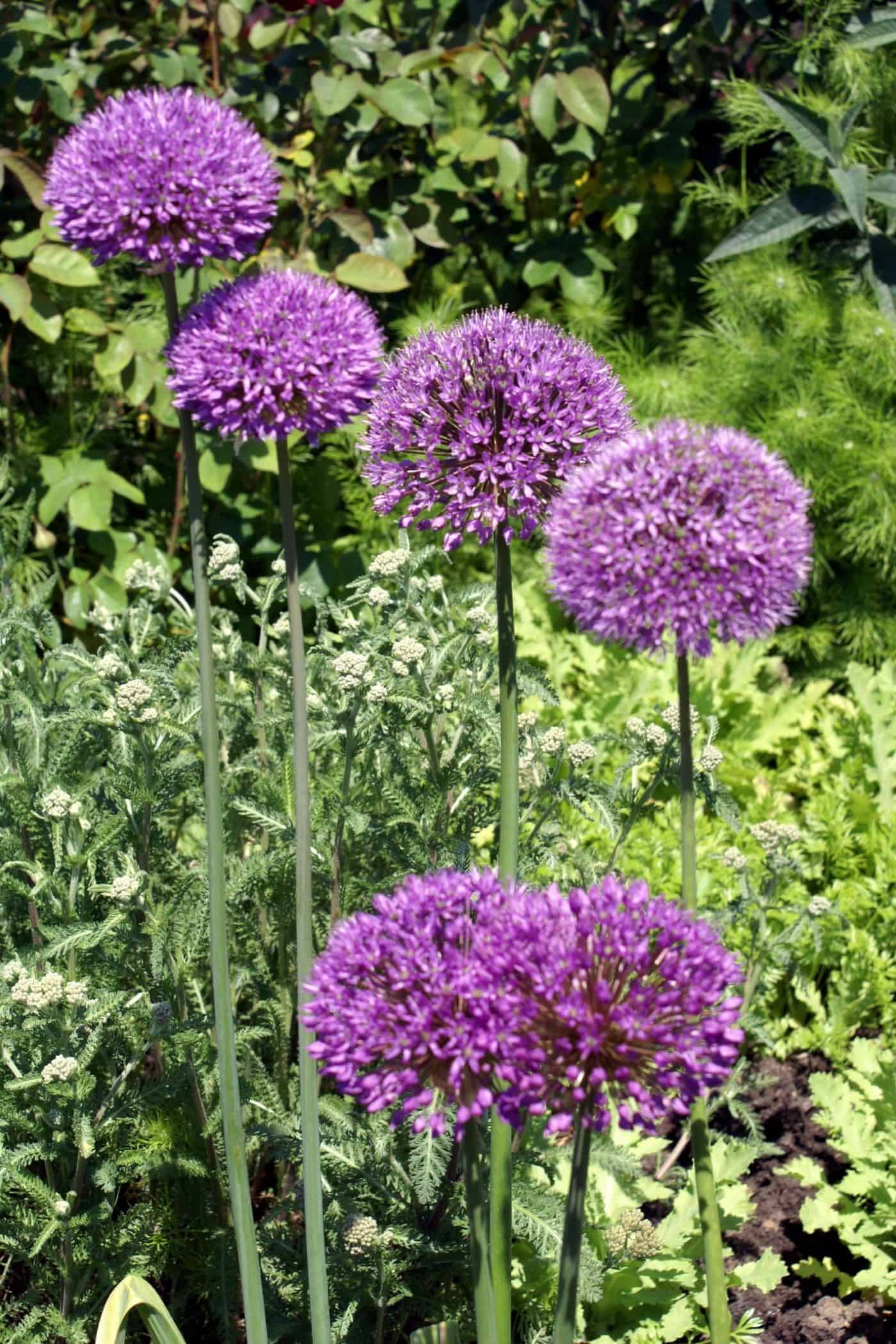
Plant diseases affecting Allium plants
If you find your alliums are dying or turning brown/yellow, there are a few potential reasons for this. Here are the most likely culprits for your allium becoming sick and dying:
First, you have poorly draining soil. If your soil is hard-packed or for any other reason does not allow for proper drainage, your bulbs will most likely be sitting in water and developing root rot. This is one of the most common reasons for your plants experiencing poor health. If this is indeed the problem, you will have to loosen the soil or replace the soil with a better draining alternative.
There is also the possibility that you are overwatering or over-fertilizing your plants. Using too much fertilizer will likely burn up the leaves and roots of your plant. If your alliums start to look a little shriveled, you may want to decrease the amount of fertilizer you are using. Allium really only needs to be fertilized once in a while, and an excess of fertilizer will quickly choke your plants.
Likewise, if you are overwatering, that’s another surefire way for root rot to occur. If your bulbs and roots are constantly soggy, they will start to grow fungus and mold and that will also kill your plants. If you don’t address the problem promptly, you might find the problem spreading through the soil and subsequently spreading to your other plants.
